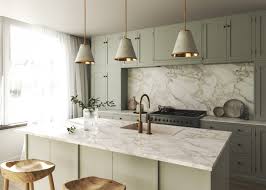Discover the Latest Kitchen Remodeling Trends: Facts, Resources, and Expert Strategies
Kitchen remodeling continues to evolve as homeowners look to blend style, functionality, and sustainability. In 2025, kitchens are becoming more personalized, tech-integrated, and environmentally friendly than ever before. Whether you're a homeowner planning a makeover or an interior design enthusiast, understanding current trends and expert strategies is essential for a successful remodel.
Understanding the Rise of Kitchen Remodeling
Kitchen remodeling refers to the renovation or complete redesign of a kitchen's layout, appliances, fixtures, surfaces, and lighting. The trend exists to address evolving lifestyle needs—like open living spaces, energy efficiency, or smart home integration.
More than just cosmetic upgrades, modern kitchen remodels are centered on improving workflow, safety, storage, and user experience. In many households, the kitchen has transitioned into a multifunctional hub for cooking, dining, working, and entertaining.
Why Kitchen Remodeling Trends Matter in 2025
Remodeling a kitchen isn't just about visual appeal. It reflects changes in technology, environmental awareness, and personal wellness. In 2025, several factors make kitchen upgrades more relevant:
Who It Affects:
-
Homeowners looking to boost property value or energy efficiency
-
Real estate investors seeking market-ready upgrades
-
Design professionals focused on functional and aesthetic planning
-
Families aiming for safer and more organized cooking environments
Problems Solved:
-
Outdated layouts with poor ergonomics
-
Energy-inefficient appliances and fixtures
-
Lack of smart technology or automation
-
Insufficient storage or lighting
-
Mismatched kitchen styles with the rest of the home
Latest Kitchen Remodeling Trends (2024–2025)
The past year brought several design and technology innovations that have influenced how kitchens are remodeled. Here are the top trends dominating 2025:
1. Sustainable and Eco-Friendly Design
-
Use of recycled materials, FSC-certified wood, and water-efficient fixtures
-
Energy Star-rated appliances and LED lighting
-
Quartz and concrete countertops replacing granite for lower environmental impact
2. Smart Kitchens
-
Integration with voice assistants (e.g., Alexa, Google Assistant)
-
Touchless faucets, smart refrigerators, and automated lighting
-
App-controlled ovens and coffee machines
3. Multifunctional Kitchen Islands
-
Double-tiered islands with seating and storage
-
Built-in induction cooktops and prep sinks
-
Charging stations and slide-out trays for devices
4. Warm Neutrals and Natural Textures
-
Earth tones like clay, sand, and olive replacing stark whites
-
Matte finishes over glossy ones
-
Use of natural wood, stone, and rattan for a softer, organic feel
5. Concealed Storage and Minimalism
-
Hidden appliances and seamless cabinetry
-
Pull-out pantry systems and toe-kick drawers
-
Minimal hardware for a clean and continuous visual line
6. Bold Backsplashes and Mixed Materials
-
Full-height backsplashes with vibrant patterns or natural stones
-
Mixing metals (brass, black, chrome) and materials (wood + metal, stone + glass)
Laws, Codes, and Regulations
Kitchen remodeling projects must follow local building codes and health standards. In many countries, these rules impact everything from electrical wiring to ventilation.
In India:
-
National Building Code (NBC) compliance is necessary for plumbing, electrical, and fire safety.
-
Urban areas may require municipal permits for layout changes, especially involving structural walls or gas lines.
-
Bureau of Indian Standards (BIS) guidelines apply for appliances and fixtures.
Internationally:
-
In the U.S., kitchen remodels must comply with local zoning laws, electrical codes (NEC), and plumbing standards (UPC/IPC).
-
In the UK, under Building Regulations, ventilation, fire safety, and electrical work must meet set criteria.
-
European Union countries enforce energy efficiency standards for appliances through the Ecodesign Directive.
Useful Tools and Resources
Planning and executing a kitchen remodel is easier with access to the right tools and platforms. Here are some that can assist:
Design and Visualization Tools
| Tool | Function |
|---|---|
| Planner 5D | 3D kitchen layouts with virtual walkthroughs |
| IKEA Kitchen Planner | Budget-friendly modular planning |
| SketchUp | Professional-level 3D design modeling |
| Houzz | Idea inspiration and local professionals |
Cost Estimators and Budget Planners
-
HomeAdvisor Cost Calculator (for U.S. users)
-
MagicBricks Renovation Tool (for Indian users)
-
Remodeling Calculator (global, customizable inputs)
Sustainable Product Resources
-
Energy Star Product Finder (U.S.)
-
IGBC Green Products Directory (India)
-
LEED-certified Appliance Lists (Global)
Frequently Asked Questions (FAQs)
How much does a kitchen remodel cost in 2025?
Costs vary by location, size, and materials. In urban India, a mid-range kitchen remodel can range from ₹3 to ₹10 lakhs. In the U.S., it ranges from $15,000 to $50,000+. Using modular designs or local materials can help reduce expenses.
What is the typical duration of a kitchen remodel?
A full kitchen remodel usually takes 4–8 weeks. This may vary depending on scope, structural work, and delivery times for materials or appliances.
Are smart appliances worth investing in?
Yes, especially for long-term use. Smart appliances offer energy savings, convenience, and remote control. In 2025, most mid-to-high-end kitchen appliances come with built-in smart features.
Can I remodel a kitchen myself?
DIY remodels are possible for tasks like painting, hardware replacement, or light tiling. However, tasks involving plumbing, gas lines, or electrical work should be handled by certified professionals.
What increases kitchen resale value the most?
High-quality cabinetry, modern lighting, and energy-efficient appliances tend to increase home resale value. Neutral color schemes and functional layouts also appeal to buyers.
Final Thoughts
Kitchen remodeling in 2025 reflects a blend of design innovation, smart technology, and environmental responsibility. By staying informed about the latest trends, using the right tools, and understanding legal and technical requirements, homeowners can ensure that their kitchen remodel adds lasting value and functionality.Whether you're updating a compact urban kitchen or redesigning a spacious family space, a thoughtful, well-informed approach will make your kitchen the true heart of your home.